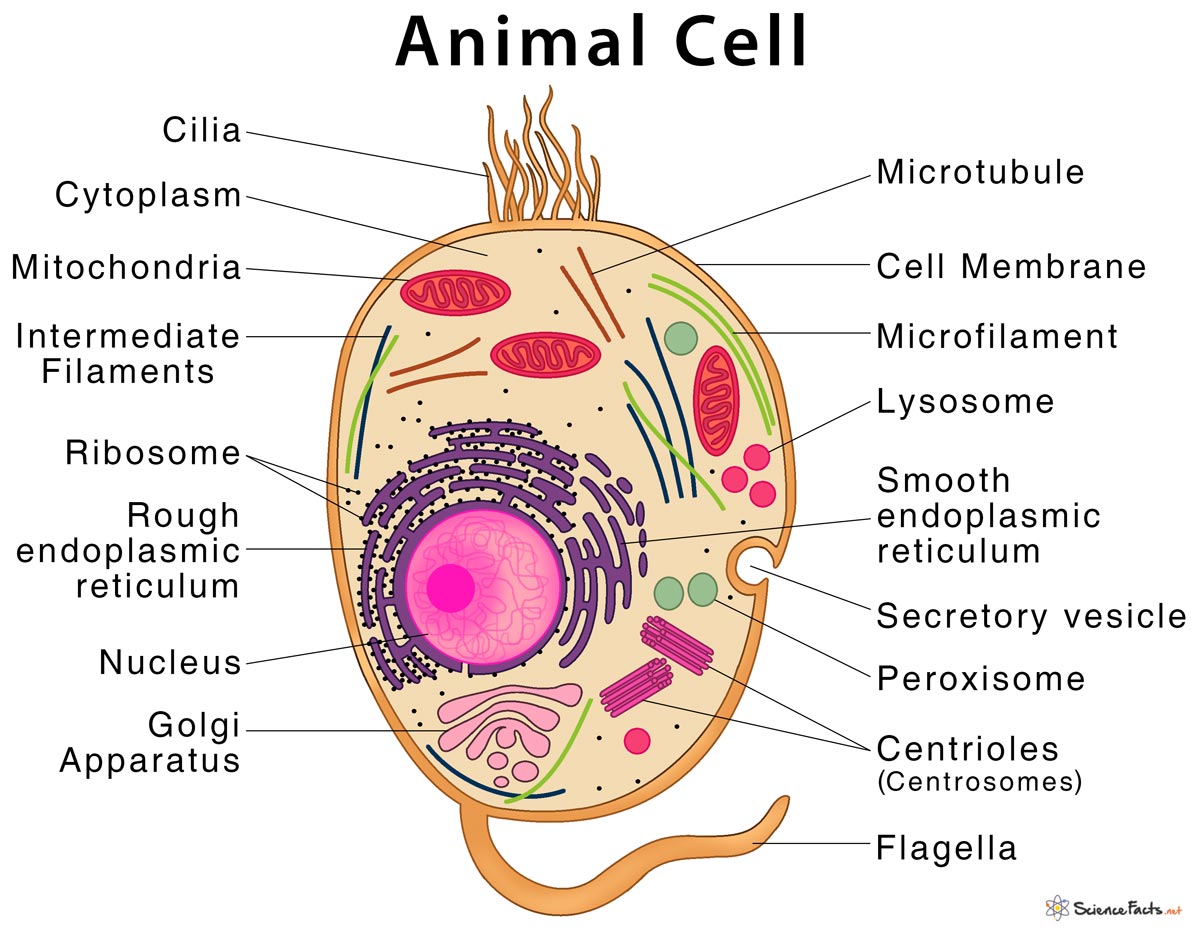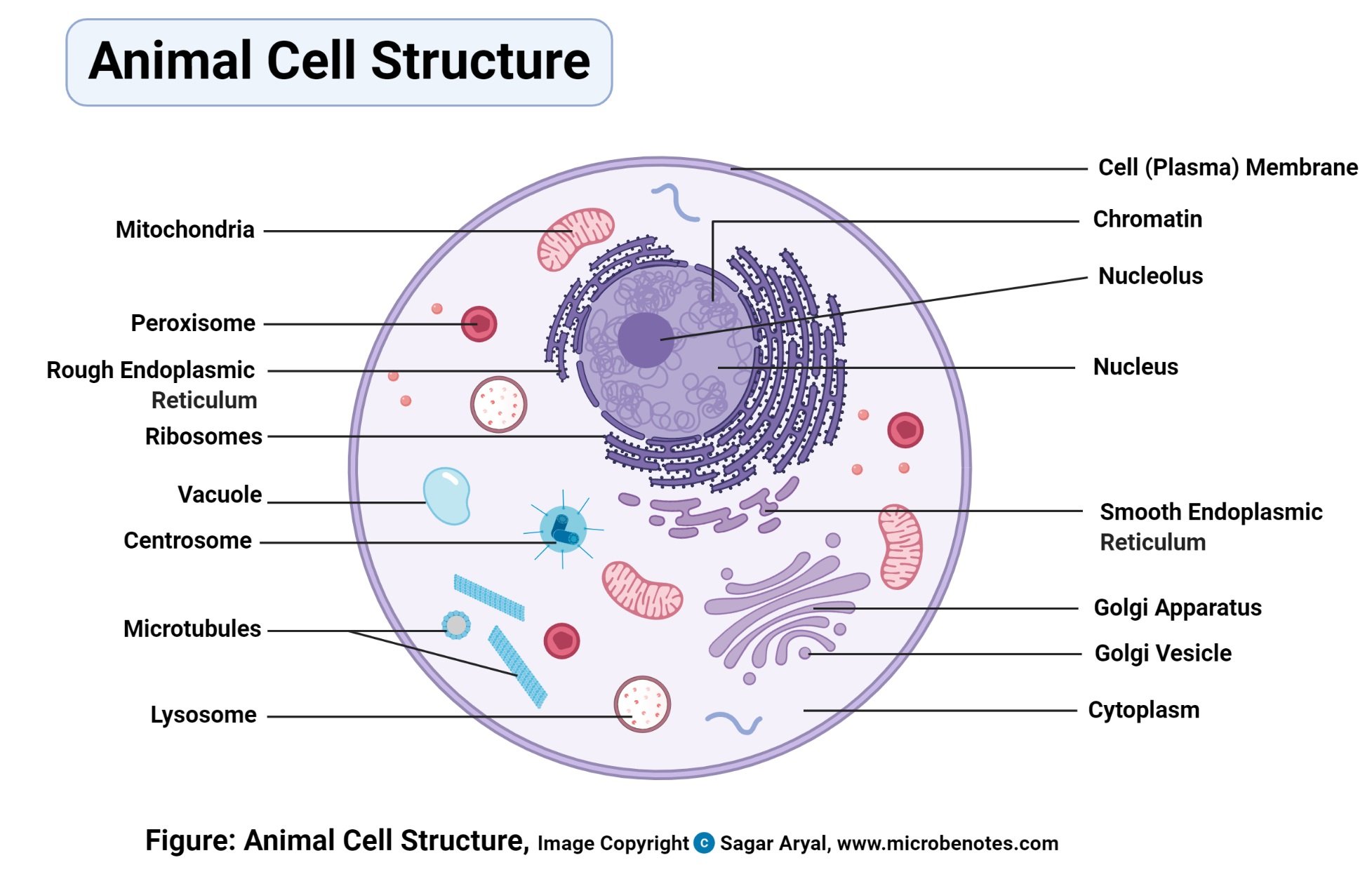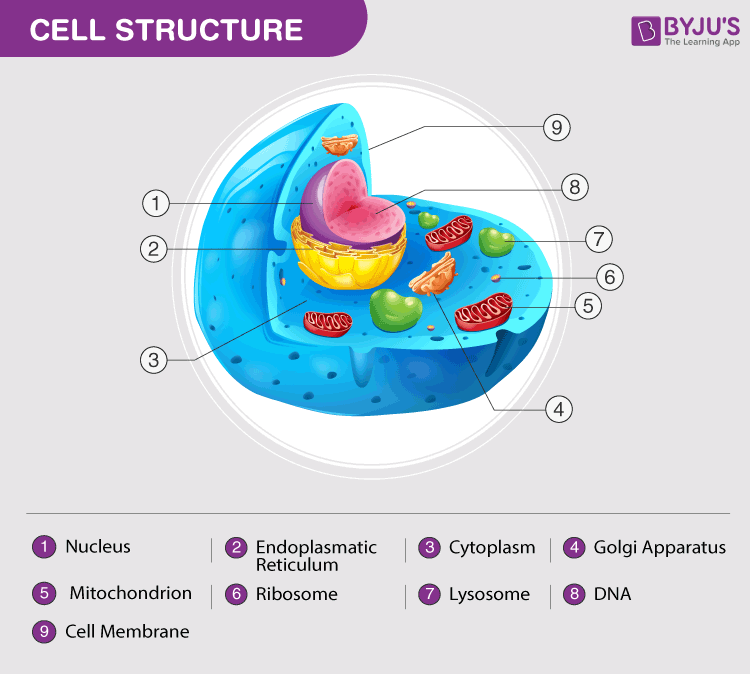Animal Cells Perform Different Functions Depending on Their Structure Explain
Moreover some significant functions of animal cells include obtaining food and oxygen keeping internal conditions stable moving and reproducing. Site for protein synthesis where the translation of the RNA takes place.

Animal Cell Structure Parts Functions Types With Diagram
There are skeleton muscle cells cardiac muscle cells and smooth muscle cells.

. Cell Membrane A thin semipermeable membrane layer of protein and fats surrounding the cell. There is an enormous range of animal cells. The nucleus is the cells control center.
Red blood cells make up over 99 of all blood cells. Large organelle surrounded by a nuclear envelopedouble membrane which contains many pores. Below the basic structure is shown in the same.
Structural organisation of a typical multicellular animal is as follows. The animal cell has 13 different types of organelles ¹ with specialized functions. Tissues are a group of cells which perform similar functions and possess nearly identical cellular structure.
Looking Inside Cells Key Ideas The cell membrane protects the cell and controls what substances enter and leave it. Different organelles represent each of these departments. The working together of all cells gives an animal its ability to move to reproduce to respond to stimuli to digest and absorb food etc.
Digest foods clean up and recycle digest broken organnelles. Animal cells have a basic structure. A typical animal cell comprises the following cell organelles.
The organization of cells of most animals is into higher levels of structure including tissues organs and organ systems. Receptor molecules which allow it to respond to molecules like hormones. Tap card to see definition.
Blood Cells There are red blood cells and white blood cells. Transport system of the cell transports molecules that need certain changes and molecules to their destination. Chemicals in food are broken down in respiration to create energy stores that can be used by the cell.
Furthermore animal cells are highly specialised to carry out specific tasks. Cells Tissues Organs Organ system. Animal cells Animals depend upon plants as an energy source.
Each is adapted to a perform specific functions such as carrying oxygen contracting muscles secreting mucus or protecting organs. Cells are the basic unit of life and these microscopic structures work together and perform all the necessary functions to keep an animal alive. Animal cells may be different sizes and shapes and may carry out a wide range of actions that tend to be specialized depending on the type of animal cell.
While both animal and plant cells have microtubule organizing centers MTOCs animal cells also have centrioles associated with the MTOC. From a sponge to a worm to a goat an organism has a distinct body plan that limits its size and shape. Animal cells have a variety of different organelles that work together to allow the cell to perform its functions.
Below you can find a list will all of them animal cell organelles and their functions with and imagediagram to help you visualize where they are and how they look within the cell. Also it controls the entry and exit of nutrients and other microscopic entities into the cell. Animal cells have a.
Like plant and fungi cells an animal cell is eukaryotic but animal cells lack the cell wall structure found in plant. The term body plan is the blueprint encompassing aspects such as symmetry segmentation and limb disposition. Tap again to see term.
The latter is the space that occupies maximum part of the cell and where the cell organelles are present. Basic Function of Animal Cell Organelles Cytoskeleton - Protein structures that give the cell its shape Centrosomes - These organelles contain short cylinders called centrioles that lie adjacent to the nucleus and play a part in reproduction. Muscle cells help move an animals limbs and organs.
An animal cell is a type of cell that differs from plant or fungi cells. ANIMAL CELL STRUCTURE AND FUNCTION. ORGANELLES OF THE ANIMAL CELL AND THEIR FUNCTION.
Organelles in the cytoplasm perform many vital functions. Membrane-enclosed sacs that contain digestive enzymes. The animal cell is made up of several structural organelles enclosed in the plasma membrane that enable it to function properly eliciting mechanisms that benefit the host animal.
Main energy source of the cell power house of the cell because energy is created here. A complex called the centrosome. Almost all animals and plants are made up of cells.
Click again to see term. Moves materials around the cell storage for the cell membrane sac. Its primary role is to protect the cell from its surrounding.
Click again to see term. Click card to see definition. An animal cell is basically divided into two parts nucleus and cytoplasm.
Animal Form and Function Animals vary in form and function. Filled with a material that is similar to the consistency of jelly the cytoplasms function in a cell is to support the internal parts. For example neurons participate in the cell to cell signaling of electrical impulses red blood cells play role in oxygen.
Made out of lipids and proteins. Regulates the movement of substances in and out of the cell. Lysosomes are more common in animal cells than in plant cells.
In humans there are numerous types of animal cells performing different functions. Name the different types of tissues. The most obvious function of the integumentary system is to protect animals from the hazards of their environment but its also indispensable for temperature regulation a coating of hair or feathers helps to preserve internal body heat protection from predators the thick shell of a turtle makes it a tough snack for crocodiles sensing pain and pressure and in humans.
Surface of animal cells and just inside the cell wall of plant and prokaryotic cells. Animal cells each have a centrosome and lysosomes whereas plant cells do not. Tissues are classified as follows.
Function in breakdown of intracellular debris digestion mitochondria powerhouse of cell. Red blood cells job is to deliver oxygen from the lungs to the rest of the body. Plant cells have a cell wall chloroplasts and other specialized plastids and a large central.
Animal body comprised of trillions of cells. Each cell can be thought of as a large factory with many departments like manufacturing packaging shipping and accounting.

A Quick Guide To The Structure And Functions Of The Animal Cell Biology Wise

Cell Definition Types Functions Diagram Division Theory Facts Cell Definition Cell Transport Cell Biology Notes

Difference Between Plant And Animal Cell Google Search Sel Hewan Sel Tumbuhan Hewan

Animal Cell Mitosis Vs Plant Cell Mitosis Difference And Comparison Diffzi Plant And Animal Cells Plant Cell Diagram Cell Diagram

A Quick Guide To The Structure And Functions Of The Animal Cell Biology Wise

Cell Organelles Structure And Functions With Labeled Diagram Cell Organelles Cell Membrane Structure Human Cell Structure

Cell Organelles Structure And Functions With Labeled Diagram Cell Organelles Organelles Human Cell Structure

Organelle Structure And Function Plant Cell Animal Cell Plant And Animal Cells

Largest Lysosomes Google Search Plant And Animal Cells Animal Cell Eukaryotic Cell

A Typical Plant Cell Do You Know The Key Differences Between Animals And Plants Prokaryotic Cell Cell Biology Plant Cell

Different Cell Organelles And Their Functions Animal Cell Cell Diagram Eukaryotic Cell

Animal Cell Definition Structure Parts Functions Labeled Diagram

Struktur Dan Fungsi Sel Hewan Beserta Penjelasannya Animal Cell Project Plant And Animal Cells Animal Cell

Animal Cell Definition Structure Parts Functions Labeled Diagram

What Is An Animal Cell Facts Pictures Info For Kids Students Animal Cell Drawing Animal Cell Animal Cell Anatomy

Animal Cell Structure Function Diagram And Types

Animal Cell Structure Function Types And Defination Yb Study

What Is Life Life Is Knowledge In Action Animal Cell Cell Structure Eukaryotic Cell

A Quick Guide To The Structure And Functions Of The Animal Cell Animal Cell Animal Cell Functions Structure And Function